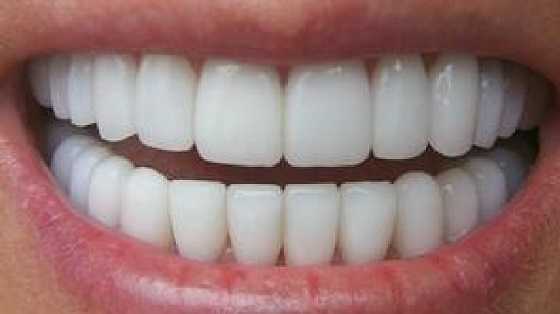When it comes to dental health, the basic thing that every person must know is about the type of teeth. They must be aware that the treatment they are getting is about milk teeth or permanent teeth. The reason for knowing it is because they both differ in structure, composition, and other aspects. In human life, there are two sets of teeth that erupt during their lifetime.
The first set is milk teeth which are also called baby teeth, then comes permanent teeth. The eruption of the permanent teeth starts anywhere between the age of 7 to 14 years of age.
What are Milk teeth?

Milk teeth are the first set of teeth that emerge during the first two years of the child’s age. By the age of 4 years, the child has all 20 milk teeth emerged in their mouth.
What are permanent teeth?

After the fall out of the child’s milk teeth, there are eruptions of the permanent teeth. This usually occurs during the age of 6 to 12 years of age. The child’s jaws here start growing to give the space for permanent teeth growth.
Many people have a common question in mind: What is the difference between milk teeth and permanent teeth? However, it is essential to know the importance of the two sets of these teeth and their usefulness.
Why are there two sets of teeth?
By now many of you must be eager to know the difference between milk teeth and permanent teeth. However, before getting into difference, let us first know the reason behind the two sets of teeth. The formation of the tooth starts from the stage when the child is in the uterus. The eruption does not occur till the age of 9 years.
The baby teeth are smaller in size and they fit easily in the smaller jaw size of the child. Milk teeth are important for the normal growth of the child and chewing the food items. Though there is a significant difference between milk teeth and permanent teeth, milk teeth are as important for the child as permanent teeth for adults.
What is the difference between milk teeth and permanent teeth?
Until now, you must have understood the basic difference between milk teeth and permanent teeth. Here, we will look at it in more detail.
Here are some of the detailed difference between milk teeth and permanent teeth:
1. Number of teeth
This is one of the basic differences between both, where there are 20 milk teeth and 32 permanent teeth in a person. In the case of milk teeth, each jaw has canine pairs, two lower and upper pairs of incisors, one first molar pair, and one-second molar pair.
2. Size of teeth
The size is the most easily observable difference between the milk teeth and permanent teeth. Milk teeth are smaller in size when compared to permanent teeth. So, this is the reason that they erupt first during the childhood days. Later, there is an eruption of the permanent teeth when a person turns to an adult.
3. Composition in teeth
The layer of the enamel on the milk teeth is very thin in comparison to the permanent teeth. This is the reason for the cavity getting easily developed in the children due to the thin layer on milk teeth. It also has a lesser surface bond cavity due to decay or crack in the teeth. The permanent teeth are stronger in comparison to the milk teeth.
4. Color appearance
The milk teeth are whiter in color when compared to the permanent teeth. The differences between these teeth are clearly visible when the permanent teeth start erupting neighboring to the milk teeth.
It makes many of the parents worry as the yellowish layer is visible clearly among their children. It is important to preserve the permanent teeth from getting stained as they will accompany for a prolonged period.
5. Pulp chambers
The pulp chambers of the milk teeth are larger when compared to the permanent teeth. This part contains blood vessels and nerves which is very essential to hold the teeth in a stronger position.
Thinner enamel along with the large pulp can cause cavities with some infection to the teeth. Pulp chambers usually get infected during adulthood when the tooth catches cavities.
The pulp area needs to be cleaned to get the proper treatment with respect to it. So, these are some of the differences between milk teeth and permanent teeth. It is very necessary to know the difference between them, as they both have different ways of caring. Every set is prone to different types of dental issues that can be easily analyzed.
Also, in case of trouble to any of the teeth, the treatment options will also differ for milk teeth or permanent teeth. Consider any of the set of teeth, taking proper treatment as per the case along with proper care is very important.
References
Expert opinion
Dr. Manan Dhulia Dental Director of Sabka dentist says "When it comes to dental problems getting the correct solution as per the case is important. Here, you must first understand the way milk teeth and permanent teeth differ from each other. It will help to make the proper decision for the treatment. Dental experts suggest the different caring solutions for each set.”
Frequently Asked Question
Is it normal to have baby teeth at 11?
On Average most children lose their baby teeth at the age of 11. Girls tend to grow faster than boys in their childhood and lose their teeth by 10. By the age of 13, Teenager loses all their baby teeth. So it’s normal to have some baby teeth at the age of 11.
What is the difference between milk teeth and permanent teeth?
Milk teeth are smaller and have a shorter root. They are often more white because of the thin enamel layer. On average person has 20 milk teeth and 32 permanent teeth in his lifespan. Infants start to get their milk teeth by the time they turn one year and permanent teeth by the time they turn seven years.










